In a landscape dominated by avant garde architect Frank Gehry's spectacular hostelry on the vineyard-strewn hills of the vast Marqués De Riscal winery, it takes something special to turn heads. And this week, that something special was a car. A Peugeot, to be exact. And this one’s no econobox.
In April, the rolling hills of the Rioja region in northern Spain lie brown and bare, their crests and valleys accentuated by rows of ancient vines, devoid of any foliage. Small hamlets dot the horizon, some little more than a cluster of red-tiled buildings huddled around the steeple of a weather-beaten chapel.
Others, like Elciego, are a bit more substantial. And this town, in the very heart of Spain’s famed Rioja red wine region, is famous not only for its earthy, robust tempranillo-based wines, but also for the almost otherworldly building that now dominates its skyline.
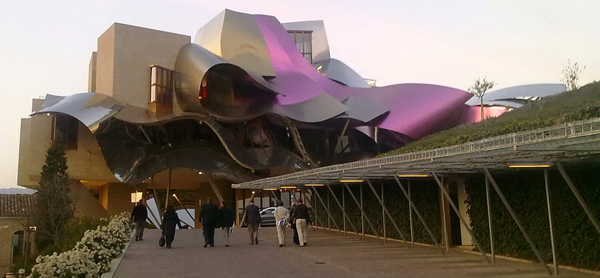
The Hotel Marqués De Riscal is not your average Hilton. Designed by the same architectural luminary who penned the equally spectacular Guggenheim Museum in nearby Bilbao, it is a confectionary of colour, shape and texture, with waves of metal in gleaming silver, gold and rosé spilling over sandstone blocks and angular window boxes.
But we’re not in Elciego to debate the merits of Gehry, or the otherworldly presence of the hotel, built literally above the five-million-bottle maturation cellar of the Marqués de Riscal winery. We’re here to drive a car. A Peugeot, to be exact.
Admittedly, it’s a long way to come for the launch of a car. But then, the RCZ is not your average compact hatchback, or sober family transporter. It’s a two-door coupé with dashing lines and the promise of equally dashing performance.
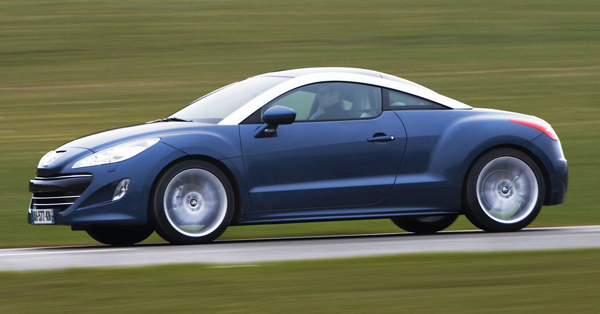
The RCZ is also Peugeot’s first real stab at the aspirational sports coupé market, where it wants to cross swords with keen, established players like the Audi TT, BMW Z4 and Mercedes-Benz SLK. And it doesn’t take a rocket scientist to realise how tough that market is to crack.
In fairness, though, the RCZ appears to have what it takes – certainly in design terms. Before flying into Spain, we’d met up with the car and its German designer, Boris Reinmöller, at Peugeot’s Technical Centre in Vélizy-Villacoublay, south of Paris.
There, parked in a vast viewing studio, bathed in that perfectly even light so favoured by designers, the RCZ looked spectacular – a lean, lithe coupé with almost sculptural shape both unmistakably Peugeot and impossibly arresting.
Much has been said and written about the Peugeot’s resemblance to the TT, but up close, it looks nothing like its Bavarian rival, bar the pronounced arc of the roofline. While the Audi’s shape is almost Bauhaus simple, the RCZ reveals an unexpected depth of detail.
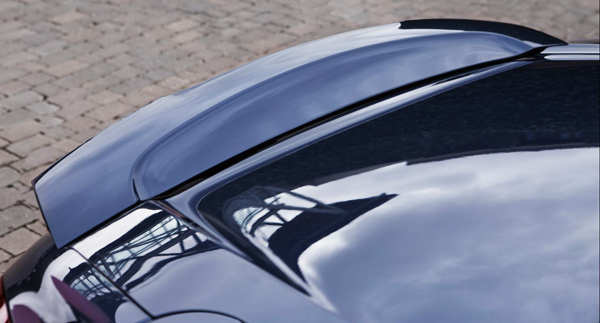
The encounter at Vélizy was brief and very static. But a day later, we’re greeted by an entire fleet of RCZs, parked in the imposing shadow of the Hotel Marqués de Riscal – and looking perfectly in tune with their avant garde surroundings. Even better, this time we get to drive the car.
That the RCZ is not at all overshadowed by Gehry’s masterpiece, but in fact complemented by it, says a lot about its own contemporary design. The lines are liquid and enticing, but with enough aggression and purpose to express an unmistakable, dynamic intent.
The front is pure Peugeot, and not that far off the current 308, but with a greater emphasis on horizontal lines, and a gaping front aperture that adds an air of menace. The flanks are scalloped, adding litheness to the overall look, while big wheels are planted at each corner.
But the rear is the real highlight. Because the silhouette expresses a strong cab-forward approach, the haunches are emphasised, adding muscle and attitude to the overall design. The feline element, something of a Peugeot design tradition has been retained so that the RCZ appears to be crouched and ready for action.
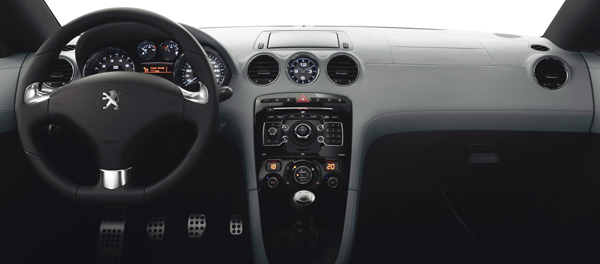
There are two derivatives to choose from here – a 147kW petrol model, and a 120kW turbodiesel, both fitted with six-speed manual gearboxes. There will also be a 115kW petrol model, combined with an automatic gearbox.
All three share the same underpinnings, based on the 308 hatchback platform, but with significantly stiffer settings. Thus, the front MacPherson struts and rear torsion bar remain in place, but there’s an extra brace bar in front, while spring and damper settings have been recalibrated to provide a much more rigid, responsive chassis.
We start off with the turbodiesel model, which Peugeot expects to be a strong seller in Europe. The HDI engine is about as refined as a four-cylinder, two-litre diesel can be, which means it’s mildly clattery at start-up, but soon reverts to a restrained growl.
The gearbox is new-generation Peugeot, which means it’s lost the sloppy shift and vague gates of older designs, and now slots through the gates with much greater conviction.
It’s the perfect introduction to the RCZ, allowing us to navigate our way through Elciego and out on to the surrounding country roads with no fuss, and plenty of time to get used to driving on the right side of the road.
The interior is essentially the same for all RCZ derivatives, and it’s an impressively executed place, all smooth hide, cool metal (not plastic) and chic design. It’s certainly convincingly upmarket, with a premium feel that’s tangible in the precision of the switchgear, the textures of the appointments, and the solid thunk when you close the doors.
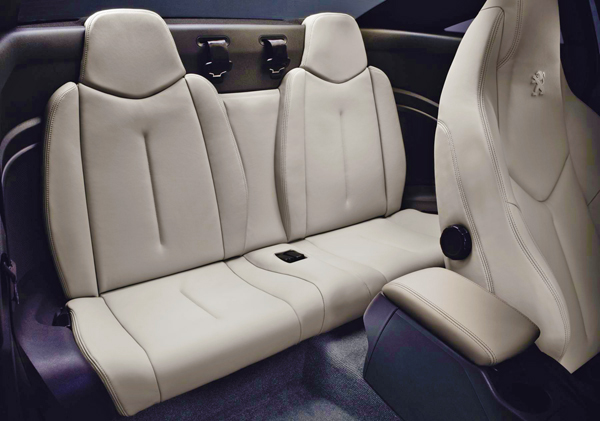
Most of all, it’s a cabin that favours the driver, with ergonomics that allow a great view of the sculpted instrument dials, a seating position that feels snug and commanding and alloy pedals that encourage heel-and-toe cog swaps.
The RCZ is a 2+2 coupé, but don’t take those two rear seats too seriously – you could squeeze two kids in for a short run to school, but beyond that, treat the space as extra luggage capacity. The rear seats fold forward to boost the already generous luggage compartment for that very reason.
At last, we’re out on the open road, and there’s space to exercise the RCZ. The roads here are undulating and twisty, sometimes treacherously so – but almost devoid of traffic. A perfect playground for exploring the Peugeot coupé’s talents.
The diesel version runs on 18-inch wheels and 235/45 R18 Continental rubber, providing plenty of grip through the serpentine sections. But the steering doesn’t feel as razor-sharp as we’d expected, and while the chassis lacks nothing in composure, the damping feels a little too stiff for the spring settings, so that the chassis reactions aren’t always consistent or cohesive.
But these are small shortcomings, highlighted here only because the rest of the car is so good. It isn’t fussed by sudden, sharp crests, which would unsettle many other so-called sports cars, and remains resolutely committed to the chosen line.
Adhesion limits are very high, and there is absolutely no body roll, allowing a flat, G-force generating cornering attitude. You sit low in a supportive, bolstered bucket seat, and the chassis is lively enough to allow close communication between car and driver.
Because the diesel has so much torque, there is no real danger of being caught out in the wrong gear: the four-potter’s tractability is more than capable of serving up huge lashings of torque when you booth the throttle, regardless of the gear selected.
Our route winds its way towards Estella and Pamplona, then veers north into the dark green bowels of the Urbasa y Andia, a tall-treed forest with rocky parapets, switchbacks and flaky tar. When we emerge, elated, at the other side, the grins on our faces say it all – this RCZ is fun.
But the best is yet to come. We swap the 2.0 HDI for the 147kW, petrol-powered flagship, hoping that the extra muscle won’t compromise the balance of the Peugeot. What follows is one of those memorable drives that you’ll recall for many years to come.
In some ways, this top RCZ flagship appears to lack the credentials demanded of a “real” sports coupé. The engine may be good for 147kW, but it is still a 1.6-litre four-cylinder, tweaked by Peugeot to produce the extra urge. Torque comes to a reassuring 275Nm, though, already on tap from only 1,700rpm.
The four-potter uses a twin-scroll turbo and clever variable valve timing to optimise output across the full 7,000rpm range, and always feels beefier than its capacity suggests. Besides, it should be pretty frugal in fuel consumption terms.But all of the stats become somewhat academic when you start driving this car. Instead, your attention becomes acutely focussed only on the car and the road ahead. Compared to the diesel, it feels like a thoroughbred – edgy but vastly superior, with a real turn of speed and a glorious exhaust note.
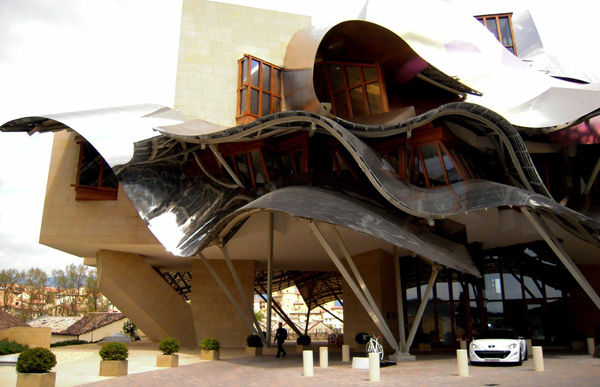
Get this: Peugeot’s designers have tailored a specific engine sound for the car, using a resonating box and a membrane that delivers a completely irresistible exhaust note to the RCZ’s interior, but without breaking any noise regulations.
Throttle blips sound glorious, downchanges become racy, raspy masterpieces, and at full throttle, the result is a performance car battle cry. If this was our car, we’d never bother using the sound system, because the RCZ makes its own, magical music.
But the sound is just the start. The 147kW RCZ benefits from a so-called Sport Pack, which is optional on the other versions. The tweaks seem subtle – beefier suspension bushes, thicker anti-roll bars, different damper settings, bigger brakes – but the result is a completely different car.
The steering is sharper and more responsive, and the attitude of the car on undulating surfaces is more incisive, more harmonious than the diesel version. The ride is certainly more cohesive, the chassis reactions more consistent and the dialogue between car and driver more unequivocal.
We expected some lag, but the engine is always on song, and there’s no sign of hesitation when you plant the loud pedal against the bulkhead. The gear linkage, featuring a shorter, more direct shift, allows rapid cog swaps too.
On that subject, though, the gearbox prefers enthusiastic gear changes, and can feel too notchy and baulky when shifting with anything less than real intent. And while the steering is crisp, it isn’t as communicative as the chassis.
But there’s lots to like: the RCZ makes the most of every one of those 147 kiloWatts, and shares the dynamic elements of its performance with such honesty, directness and conviction that it always feels quicker, more challenging (and ultimately more entertaining) than the statistics suggest.
It is, quite simply, a great driver’s car – and good enough to stand its ground on premium coupé territory.
That it also looks the sports coupé part, and palpably delivers on the quality front with a surprisingly generous and comprehensively appointed interior, only adds to the almost irresistible appeal of the RCZ.
Pricing remains unconfirmed at the time of writing, but European price positioning suggests that a full-house RCZ flagship will cost substantially less than an entry-level Audi TT. That would indicate a retail price of around R370 000 when it arrives in SA towards the end of September.
For me, there would only be one choice – the 147kW petrol version – but the effortless cruising talent of the HDI turbodiesel is sure to attract its own, different fan base. The same goes for the 115kW model with the six-speed auto gearbox.
However, regardless of the model you prefer, one thing’s for sure: Peugeot will never be the same again.
Deon Schoeman
Peugeot RZC 1.6 THP 147 kW
Engine
In-line four-cylinder, 1 598 cc, turbocharged
Gearbox
Six-speed manual
Power
147 kW @ 5 500 rpm
Torque
275 Nm @ 1 050 rpm
0-100 km/h
7,5 sec
Top speed
235 km/h
Fuel consumption
6,9 l/100 km
Carbon dioxide emissions
159 g/km
Retail price
TBA

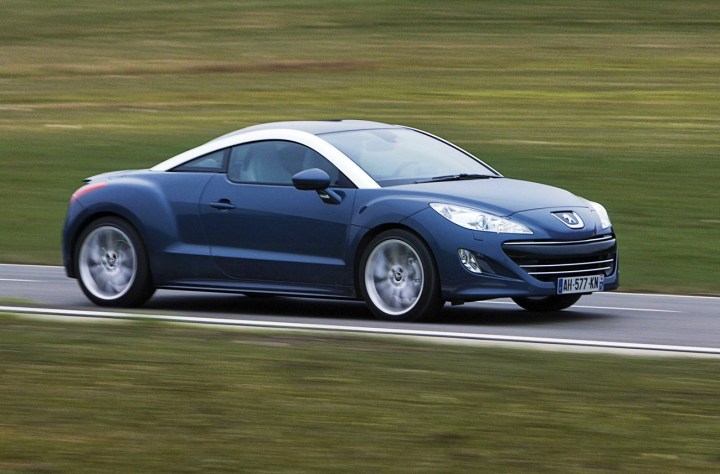














 Become an Insider
Become an Insider